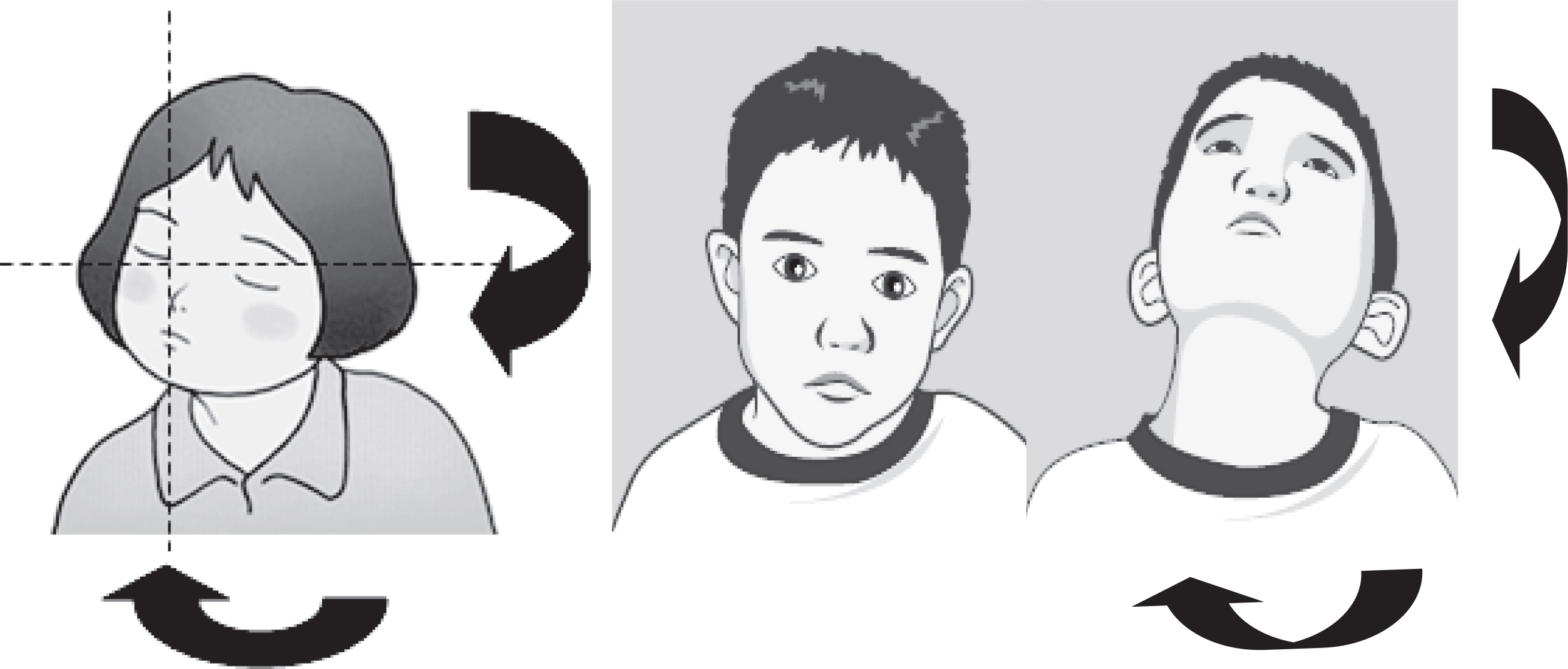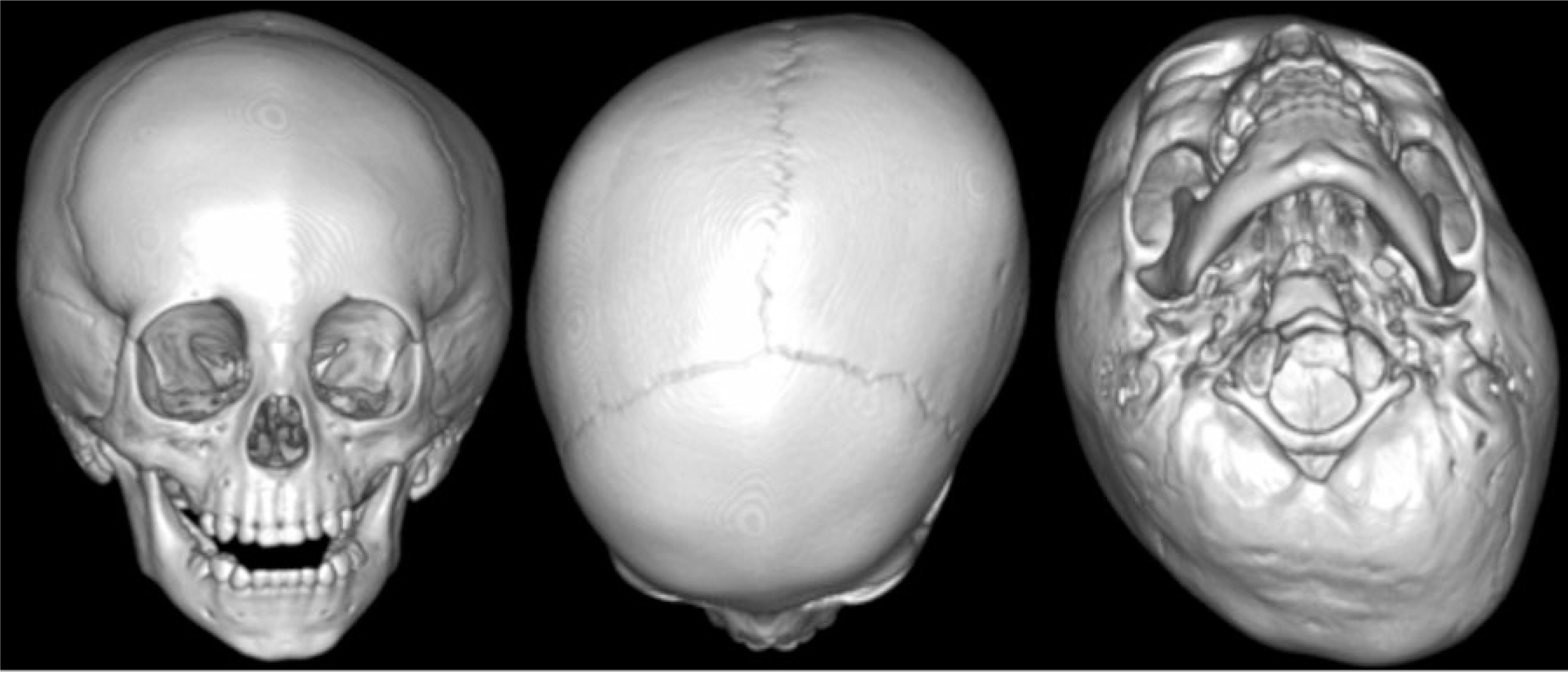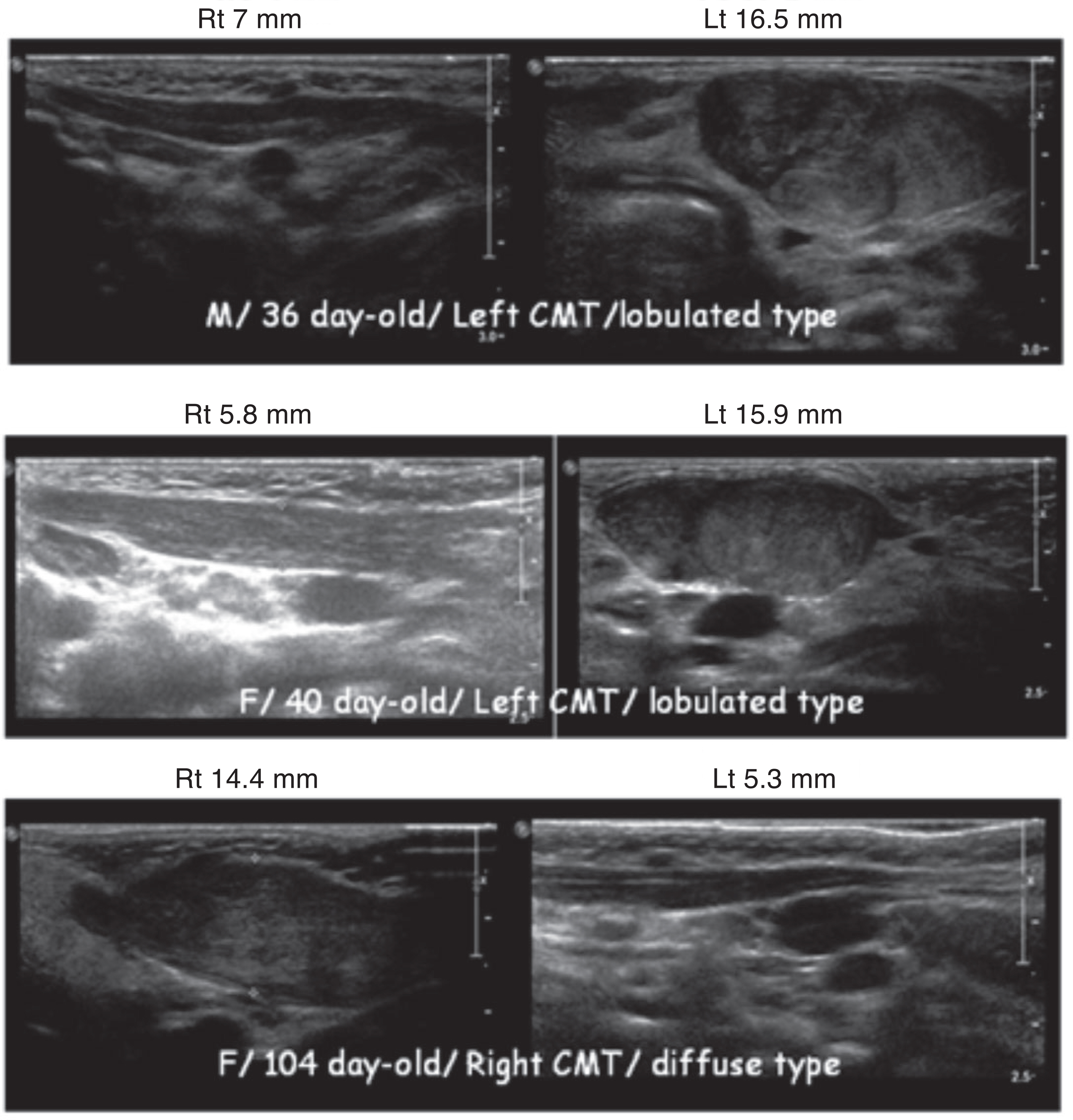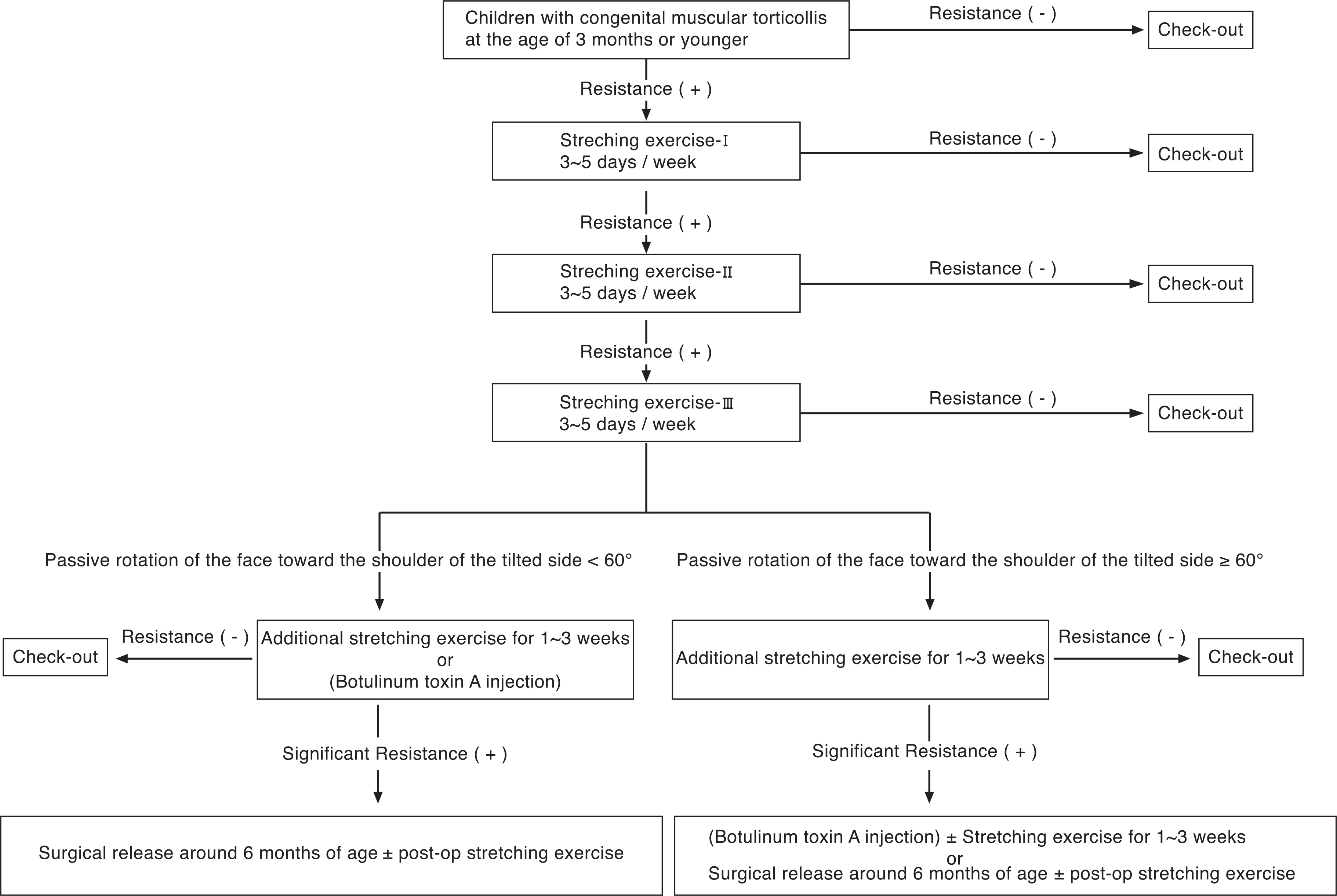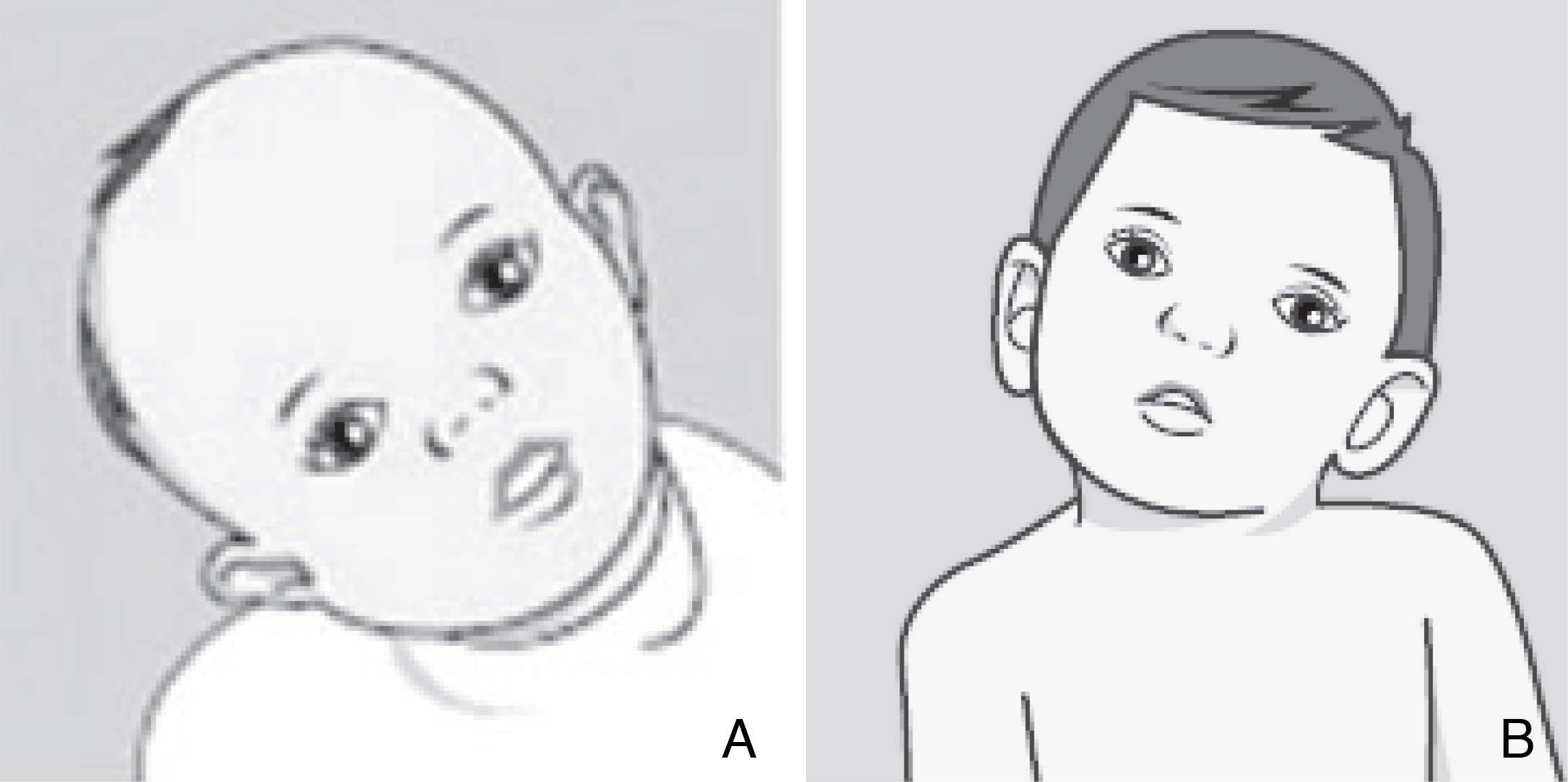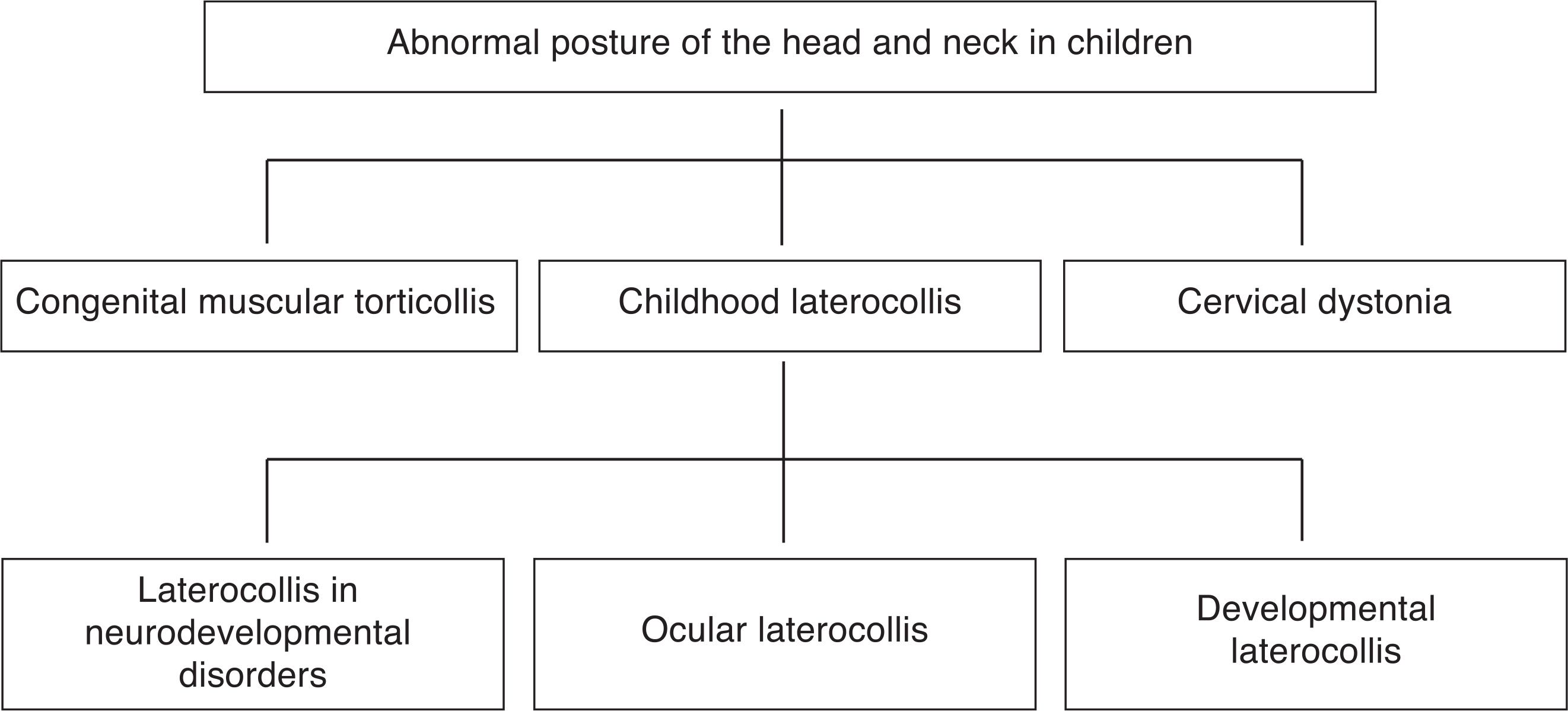References
1. Cheng JC, Metreweli C, Chen TM, Tang S. Correlation of ultrasonographic imaging of congenital muscular torticollis with clinical assessment in infants. Ultrasound Med Biol 2000;26:1237–1241.
2. Cheng JC, Tang SP, Chen TM, Wong MW, Wong EM. The clinical presentation and outcome of treatment of congenital muscular torticollis in infants-a study of 1,086 cases. J Pediatr Surg 2000;35:1091–1096.
3. Chen MM, Chang HC, Hsieh CF, Yen MF, Chen TH. Predictive model for congenital muscular torticollis: analysis of 1021 infants with sonography. Arch Phys Med Rehabil 2005;86:2199–2203.
4. Dudkiewicz I, Ganel A, Blankstein A. Congenital muscular torticollis in infants: ultrasound-assisted diagnosis and evaluation. J Pediatr Orthop 2005;25:812–814.
5. Sonmez K, Turkyilmaz Z, Demirogullari B, Ozen IO, Karabulut R, Bagbanci B, Basaklar AC, Kale N. Congenital muscular torticollis in children. ORL J Otorhinolaryngol Relat Spec 2005;67:344–347.
6. Do TT. Congenital muscular torticollis: current concepts and review of treatment. Curr Opin Pediatr 2006;18:26–29.
7. Tatli B, Aydinli N, Caliskan M, Ozmen M, Bilir F, Acar G. Congenital muscular torticollis: evaluation and classification. Pediatr Neurol 2006;34:41–44.
8. Cheng JC, Au AW. Infantile torticollis: a review of 624 cases. J Pediatr Orthop 1994;14:802–808.
9. Cheng JC, Tang SP, Chen TM. Sternocleidomastoid pseudotumor and congenital muscular torticollis in infants: a prospective study of 510 cases. J Pediatr 1999;134:712–716.
10. Friedman M, LoSavio P, Ibrahim H. Superior laryngeal nerve identification and preservation in thyroidectomy. Arch Otolaryngol Head Neck Surg 2002;128:296–303.
11. Kiray A, Naderi S, Ergur I, Korman E. Surgical anatomy of the internal branch of the superior laryngeal nerve. Eur Spine J 2006;15:1320–1325.
12. Reynolds SM, Mackenzie AJ, Spina D, Page CP. The pharmacology of cough. Trends Pharmacol Sci 2004;25:569–576.
13. Thompson F, McManus S, Colville J. Familial congenital muscular torticollis: case report and review of the literature. Clin Orthop Relat Res 1986. 193–196.
14. Davids JR, Wenger DR, Mubarak SJ. Congenital muscular torticollis: sequela of intrauterine or perinatal compartment syndrome. J Pediatr Orthop 1993;13:141–147.
15. Yu CC, Wong FH, Lo LJ, Chen YR. Craniofacial deformity in patients with uncorrected congenital muscular torticollis: an assessment from three-dimensional computed tomography imaging. Plast Reconstr Surg 2004;113:24–33.
16. Park MC, Song HS, Kim CS, Yim SY, Park DH, Pae NS, Lee IJ. Treatment of congenital muscular torticollis with unipolar release. J Korean Soc Plast Reconstr Surg 2009;35:38–45.
17. Oleszek JL, Chang N, Apkon SD, Wilson PE. Botulinum toxin type a in the treatment of children with congenital muscular torticollis. Am J Phys Med Rehabil 2005;84:813–816.
18. Collins A, Jankovic J. Botulinum toxin injection for congenital muscular torticollis presenting in children and adults. Neurology 2006;67:1083–1085.
19. Singh A, Wacogne I. What is the role of helmet therapy in positional plagiocephaly? Arch Dis Child 2008;93:807–809.
20. Lee RP, Teichgraeber JF, Baumgartner JE, Waller AL, English JD, Lasky RE, Miller CC, Gateno J, Xia JJ. Long-term treatment effectiveness of molding helmet therapy in the correction of posterior deformational plagiocephaly: a five-year follow-up. Cleft Palate Craniofac J 2008;45:240–245.
21. Raman S, Takhtani D, Wallace EC. Congenital torticollis caused by unilateral absence of the sternocleidomastoid muscle. Pediatr Radiol 2009;39:77–79.
22. Williams CR, O'Flynn E, Clarke NM, Morris RJ. Torticollis secondary to ocular pathology. J Bone Joint Surg Br 1996;78:620–624.
23. Madigan WP, Zein WM. Recent developments in the field of superior oblique palsies. Curr Opin Ophthalmol 2008;19:379–383.
24. Quartarone A, Rizzo V, Morgante F. Clinical features of dystonia: a pathophysiological revisitation. Curr Opin Neurol 2008;21:484–490.
25. Benecke R, Dressler D. Botulinum toxin treatment of axial and cervical dystonia. Disabil Rehabil 2007;29:1769–1777.
26. Stacy M. Epidemiology, clinical presentation, and diagnosis of cervical dystonia. Neurol Clin 2008;26(Suppl 1):23–42.
27. Jankovic J, Tsui J, Bergeron C. Prevalence of cervical dystonia and spasmodic torticollis in the United States general population. Parkinsonism Relat Disord 2007;13:411–416.
28. Lee CS, Lee CS, Chung SJ, Chung SJ, Im JH, Im JH, Lee MC, Lee MC, Yoo HW, Yoo HW. The DYT1 Gene Mutation in Primary Torsion Dystonia without Familial Background. J Korean Neurol Assoc 2003;21:169–173.
29. Nishiyama N, Yukishita S, Hagiwara H, Kakimoto S, Nomura Y, Segawa M. Gene mutation in hereditary progressive dystonia with marked diurnal fluctuation (HPD), strictly defined dopa-responsive dystonia. Brain Dev 2000;22(Suppl 1):S102–106.
30. Adam OR, Jankovic J. Treatment of dystonia. Parkinsonism Relat Disord 2007;13(Suppl 3):S362–368.
31. Jankovic J. Treatment of dystonia. Lancet Neurol 2006;5:864–872.
32. Ranoux D. Cervical dystonia. In: Ranoux D, Gury C, eds. Practical handbook on botulinum toxin. Marseile, France: 33. Agrawal A, Cincu R, Joharapurkar SR, Bhake A, Hiwale KM. Hemorrhage in brain stem cavernoma presenting with torticollis. Pediatr Neurosurg 2009;45:49–52.
34. Hicazi A, Acaroglu E, Alanay A, Yazici M, Surat A. Atlantoaxial rotatory fixation-subluxation revisited: a computed tomographic analysis of acute torticollis in pediatric patients. Spine 2002;27:2771–2775.
35. Maigne JY, Mutschler C, Doursounian L. Acute torticollis in an adolescent: case report and MRI study. Spine 2003;28:E13–15.
36. Simsek S, Yigitkanli K, Kazanci A, Belen D, Bavbek M. Medically treated paravertebral Brucella abscess presenting with acute torticollis: case report. Surg Neurol 2007;67:207–210.
37. Sankar J, Srinivasan A, Ramakrishnan V, Balasubramaniam C. An Unusual Cause of Acute Torticollis. Clin Pediatr (Phila) 2009.
38. Papadimitriou NG, Christophoridis J, Papadimitriou A, Beslikas TA. Acute torticollis after isolated stress fracture of the first rib in a child. A case report. J Bone Joint Surg Am 2005;87:2537–2540.
39. Mukherjee S, Sharief N. Bacterial meningitis presenting as acute torticollis. Acta Paediatr 2004;93:1005–1006.


